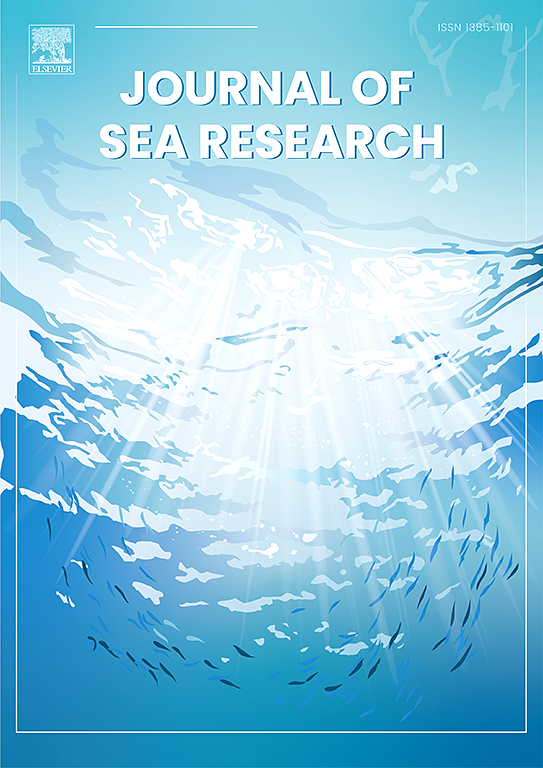Understanding the shift in bacterial community structure in response to antibiotic pollution and rise in antibiotic resistant genes within Dapeng Cove sea, China
IF 2.9
4区 地球科学
Q2 MARINE & FRESHWATER BIOLOGY
引用次数: 0
Abstract
Antibiotic pollution in marine environments poses a growing threat to ecosystem health and biodiversity. This study evaluated the shift in bacterial community structure in response to antibiotic pollution and rise in antibiotic resistant genes within the ecologically significant Dapeng Cove, Southeast China. Utilizing molecular analysis and bioinformatics, the study examined bacterial community structures, antibiotic concentrations, and the distribution of antibiotic resistance genes (ARGs) across 5 sites (A, B, C, D and E) within the Dapeng Cove sea, China. The findings revealed significant variations in bacterial diversity and ARG concentrations among sampling sites, with elevated antibiotic pollution at sites D and E correlating with reduced alpha diversity and dominance of resistant taxa such as Umbonibacter species. In contrast, site B exhibited lower antibiotic levels and higher microbial diversity, suggesting the resilience of less impacted ecosystems. ARGs, including intl1, sul1, and tetA, were most prevalent in heavily polluted sites, reflecting the role of antibiotic contamination in promoting horizontal gene transfer and resistance proliferation. Exposure to antibiotic pollution e further disrupted coral-associated bacterial communities, highlighting the vulnerability of marine ecosystems antibiotic pollution. This study provides critical insights into the interplay between antibiotic pollution, microbial ecology, and coral health, offering a foundation for policies addressing the environmental impacts of pharmaceutical contaminants.
了解大鹏湾海域细菌群落结构对抗生素污染的响应及耐药基因的增加
海洋环境中的抗生素污染对生态系统健康和生物多样性构成越来越大的威胁。本研究评估了中国东南部生态重要的大鹏湾细菌群落结构对抗生素污染的响应变化和抗生素耐药基因的增加。利用分子分析和生物信息学技术,研究了中国大鹏湾海域5个地点(A、B、C、D和E)的细菌群落结构、抗生素浓度和抗生素耐药基因(ARGs)分布。结果显示,不同采样点的细菌多样性和ARG浓度存在显著差异,D和E点抗生素污染升高与α多样性降低和耐药分类群(如Umbonibacter物种)的优势相关。相比之下,B点显示出较低的抗生素水平和较高的微生物多样性,表明受影响较小的生态系统具有弹性。包括int1、sul1和tetA在内的ARGs在严重污染位点最为普遍,反映了抗生素污染在促进基因水平转移和耐药性增殖中的作用。抗生素污染进一步破坏了与珊瑚相关的细菌群落,凸显了海洋生态系统抗生素污染的脆弱性。这项研究为抗生素污染、微生物生态和珊瑚健康之间的相互作用提供了重要的见解,为解决药物污染物对环境影响的政策提供了基础。
本文章由计算机程序翻译,如有差异,请以英文原文为准。
求助全文
约1分钟内获得全文
求助全文
来源期刊

Journal of Sea Research
地学-海洋学
CiteScore
3.20
自引率
5.00%
发文量
86
审稿时长
6-12 weeks
期刊介绍:
The Journal of Sea Research is an international and multidisciplinary periodical on marine research, with an emphasis on the functioning of marine ecosystems in coastal and shelf seas, including intertidal, estuarine and brackish environments. As several subdisciplines add to this aim, manuscripts are welcome from the fields of marine biology, marine chemistry, marine sedimentology and physical oceanography, provided they add to the understanding of ecosystem processes.
 求助内容:
求助内容: 应助结果提醒方式:
应助结果提醒方式:


